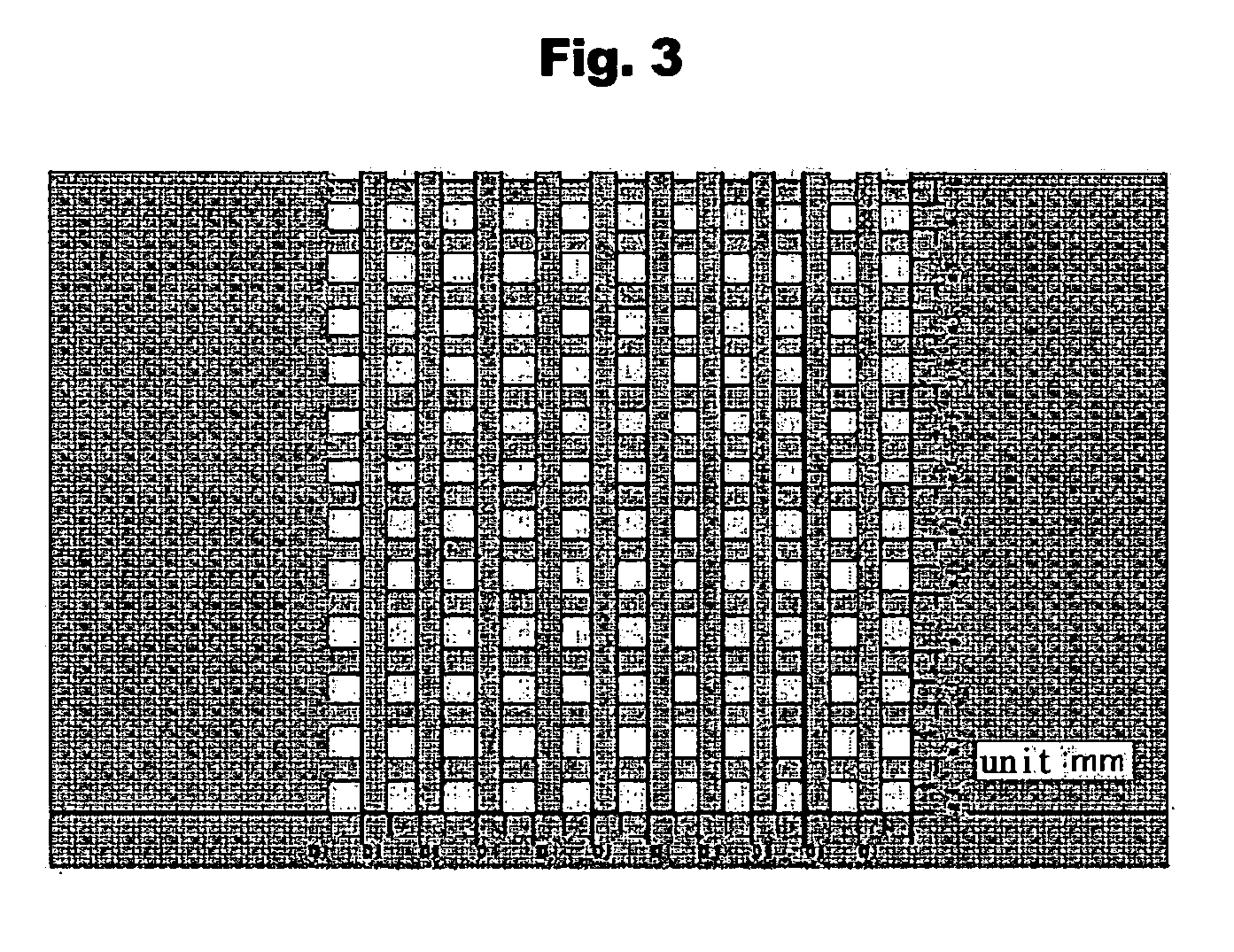Vertical organic thin film transistor and organic light emitting transistor
a technology of organic light-emitting transistors and vertical transistors, which is applied in the direction of thermoelectric device junction materials, semiconductor devices, electrical apparatus, etc., can solve the problems of low light-emitting efficiency, high operating voltage of horizontal transistors, and unsuitable use of organic el devices manufactured through active matrix processes, etc., to achieve high light-emitting efficiency
- Summary
- Abstract
- Description
- Claims
- Application Information
AI Technical Summary
Benefits of technology
Problems solved by technology
Method used
Image
Examples
example 1
[0045] Fabrication of Vertical Organic Thin Film Transistor Using Copper Phthalocyanine (Cupc)
[0046] On a glass substrate coated with ITO, a pattern having a desired shape was formed using a chemical resistant tape. The patterned ITO substrate was dipped into an aqueous solution of hydrochloric acid, after which an unnecessary ITO portion was removed using magnesium powder to obtain the substrate on which only a desired pattern remained, which was then washed with an acetone solvent and dried, thus forming an ITO pattern of a source electrode. On the patterned ITO electrode, copper phthalocyanine was deposited to a thickness of 1000 Å under about 10−5 torr using a vacuum evaporator, to form a first p-type organic semiconductor layer. Subsequently, gate electrodes arranged in a grid shape were deposited to a thickness of 100 Å using a metal mask, as shown in FIG. 3, having a line width of about 100 μm, on the first p-type organic semiconductor layer. Thereafter, a 1000 Å thick secon...
example 2
[0047] Fabrication of Vertical Organic Thin Film Transistor Using Nickel Phthalocyanine (NiPc)
[0048] Chemically patterned ITO, 1000 Å thick nickel phthalocyanine, a 100 Å aluminum electrode, 1000 Å thick nickel phthalocyanine, and a 1000 Å thick aluminum electrode, in that order, were vertically deposited in a vacuum (1×10−6 torr), thus fabricating a vertical organic thin film transistor. The current-voltage properties of the vertical organic thin film transistor thus obtained were measured. The results are shown in FIGS. 6a and 6b. FIG. 6a shows results at multiple gate voltages, Vg, specifically, at gate voltages of 0, 6, 10, 12, 14, 16, and 20 V.
examples 37
[0049] Respective vertical organic thin film transistors were fabricated in the same manner as in Example 1, with the exception that the structure of the gate electrodes were varied as shown in Table 1, below. The current-voltage properties of the vertical organic thin film transistor thus obtained were measured. The results are shown in Table 1, below.
TABLE 1Ex. No.Gate StructureVds (V)Current (A)On / Off Ratio3Line 0.1 mm, Area: 1 mm210Vg = 0V: 0.253 × 10−3 A95.78Vg = 20V: 24.20 × 10−3 A4Zipper type, Area: 1 mm210Vg = 0V: 0.107 × 10−3 A86.1Vg = 20V: 9.21 × 10−3 A5Line 0.1 mm, Area: 4 mm210Vg = 0V: 1.11 × 10−3 A78Vg = 20V: 86.80 × 10−3 A6Line 0.3 mm, Area: 4 mm210Vg = 0V: 0.492 × 10−3 A60Vg = 20V: 29.50 × 10−3 A7Grid, Area: 4 mm210Vg = 0V: 0.374 × 10−3 A112Vg = 20V: 41.438 × 10−3 A
PUM
 Login to View More
Login to View More Abstract
Description
Claims
Application Information
 Login to View More
Login to View More - R&D
- Intellectual Property
- Life Sciences
- Materials
- Tech Scout
- Unparalleled Data Quality
- Higher Quality Content
- 60% Fewer Hallucinations
Browse by: Latest US Patents, China's latest patents, Technical Efficacy Thesaurus, Application Domain, Technology Topic, Popular Technical Reports.
© 2025 PatSnap. All rights reserved.Legal|Privacy policy|Modern Slavery Act Transparency Statement|Sitemap|About US| Contact US: help@patsnap.com



